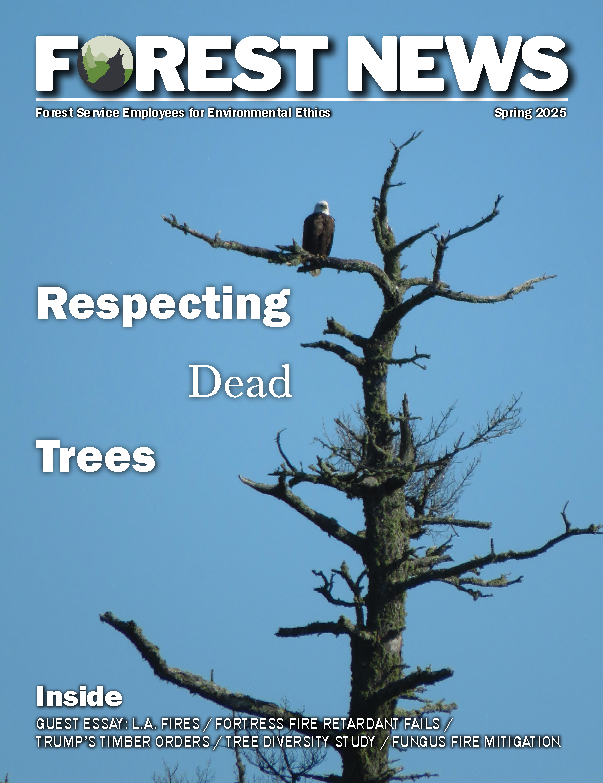On Oct. 30, 2024, just as the previous issue of Forest News was going to print, researchers at the University of Southern California’s Department of Civil and Environmental Engineering published a report titled “Metals in Wildfire Suppressants.” The report provides the first-ever chemical analysis of aerial fire retardant.
The USC report shows that the most commonly-used retardant, Phos-Chek, contains high levels of toxic metals. California, where half of all U.S. retardant rains down, has established levels beyond which toxic metals are considered “hazardous waste.”
The limit for cadmium is 1,000 micrograms per liter (μg/l). The USC researchers found that Phos-Chek contains 14,400 μg/l of cadmium. For chromium, the hazardous waste level is 5,000 μg/l; Phos-Chek contains 72,700 μg/l. For vanadium, which can be radioactive, Phos-Chek contains 119,000 μg/l, five times the hazardous-waste limit.
Photo: A slurry bomber dumps Phos-Chek retardant on the Sequoia National Forest during the 2016 Cedar Fire (USDA Photo by Lance Cheung).


